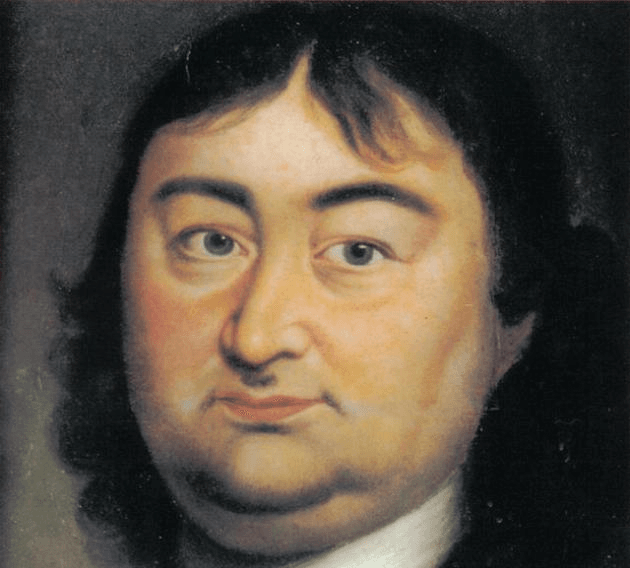They write that the most widely circulated portrait of Captain-Commander Vitus Bering is the portrait of his historian uncle. Let's check if this is true.
Russian Wikipedia asserts, that for a long time the only lifetime image of the captain-commander of the Russian fleet Vitus Bering was considered to be the portrait we published above. However, in fact, this is supposedly not his portrait, but a portrait of his uncle and namesake, a Dane named Vitus Pedersen Bering.
Until the 20th century, everyone who studied Bering’s biography knew that no portraits of him survived during his lifetime. But in 1945, Bering’s great-great-granddaughter discovered that now well-known portrait. The historian Mezentsev published it in Izvestia of the All-Union Geographical Society (vol. 77, no. 5, 1945) with the comment: “Due to the current absence of another portrait of Bering, the possibility of comparison to verify the authenticity of the image is excluded. One must believe the legend preserved by Bering’s descendants, since there is no reason to discredit it.”
And so it happened. Since then, in most books and encyclopedias this portrait has illustrated articles about Bering. IN Wikipedia in Danish this is still the case. The same portrait formed the basis for the image on the memorial medals in honor of the 225th anniversary of his death.
The grounds appeared when, 20 years later, Danish historians found out that the portrait depicted not the navigator, but his mother’s uncle, that is, his great uncle (in Russian Wikipedia and many Russian-language sources he is mistakenly called uncle). Unlike his great-nephew, who left his homeland at the age of 14, Vitus Sr. lived most of his life in Denmark, wrote poetry in Latin and was a court historiographer. But since there was no other portrait, publishers continued to use this one.
In 1991, a Russian-Danish expedition found the navigator’s grave on Bering Island. Based on his remains, forensic expert Viktor Zvyagin used plastic reconstruction to restore the appearance of Vitus Bering, close to the real one. Modern artists began to paint new portraits from the resulting bust.

Several years ago, the chief librarian of the local history department of the Kamchatka Regional Scientific Library Natalya Divnina collected 148 images of Captain-Commander Bering and published a scientific article, which also tells the story of the portrait that interests us.
Vitus Bering is considered the founder of Petropavlovsk-Kamchatsky. Monument it was installed in the city back in 1827 and is a two-meter metal column with a capital topped with a lotus flower. How else could one get out of the situation if the image of the person was not preserved?
Mostly true
Read on topic:
- http://old.kamlib.ru/resourses/divnina_33.htm Divnina N.V. 148 portraits of Vitus Bering // “On the path to the unknown...”: materials of the XXXIII Krashennikov Readings / Ministry of Culture of the Kamchatka Territory, Kamchatka Regional Scientific Library named after. S. P. Krasheninnikova. - Petropavlovsk-Kamchatsky, 2016. - P. 103-108.
- https://www.youtube.com/watch?v=CSWg7ZcThA4
- https://russiapedia.rt.com/prominent-russians/exploring-russia/vitus-bering/
If you find a spelling or grammatical error, please let us know by highlighting the error text and clicking Ctrl+Enter.







